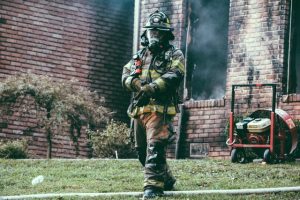What Is a Puffback & How to Prevent It
 We all are well aware of the increased use of heating systems as the weather gets colder. However, what most people do not know about is the reason for several insurance claims for boiler and furnace failures. One of the major causes and most frequent complaints that can become a massive issue for the homeowners is Puffbacks!
We all are well aware of the increased use of heating systems as the weather gets colder. However, what most people do not know about is the reason for several insurance claims for boiler and furnace failures. One of the major causes and most frequent complaints that can become a massive issue for the homeowners is Puffbacks!
Puffbacks occur when a boiler or furnace misfires, causing dangerous smoke and soot emission, leading to smoke damage or worse conditions. Insurers and adjusters should know what a puffback is and what causes it to happen because these potentially risky incidents are pretty expensive to cover. And it might become a nuisance for the homeowners as they are often the result of a loss not covered by an insurance policy.
This article will help you understand what is a puffback, what causes it, and how to handle the situation before it gets out of hand. Let’s begin!
What Is a Puffback?
Whenever a furnace or boiler fails to ignite properly, allowing gas or oil fumes to accumulate inside the ignition chamber or combustor increases the chances of a puffback. As a result of the surplus of these fumes and fuel in the chamber, an uncontrolled explosion known as puffback will occur – causing smoke and soot to disperse throughout the area.
How much fuel accumulates in the chamber determines whether this results in a little bit of smoke damage or an explosion. You can experience the incident of puffbacks in either gas or oil-based boilers and furnaces. However, they are more common in oil-fired equipment than in gas-fired equipment because they create more soot than the later one – now you know which one to opt for.
What Causes Puffbacks?
Furnaces and boilers should be serviced annually, regardless of fuel type. Puffbacks are most commonly caused by a lack of normal maintenance or age-related wear and tear on the engine’s components. Causes might be as diverse as:
- The presence of a leak in or near the combustion chamber can allow fuel to accumulate in the chamber, which can result in a puffback when the engine is ignited.
- In some cases, combustion gases cannot be effectively vented out of the furnace because the exhaust or chimney is blocked by debris, dust, fuel residues, rust, or corrosion. Difficulties maintaining constant internal pressure due to a mismatch between fuel and air can result in puffbacks.
- To prevent combustion gases from venting correctly out of the furnace, cracks in the heat exchanger (similar to clogged exhaust or chimney) generate an internal pressure irregularity that might result in the flame rollout. Because of this, extra gasoline can enter the ignition chamber, causing a puffback when the ignition occurs.
- Unburned fuel can build up in the chamber if the system is reset too often, resulting in a puffback when the system eventually ignites.
- Due to the uneven spraying of oil due to damaged or cracked gasoline fuel nozzles, the burners may not ignite. It will keep trying to spray, allowing more oil to enter the burner over time as it tries to spray. Inflammation of the oil can cause puffback.
- Dirty, dusty, fuel residue-filled, rusted or corroded burners can also be a prime reason for a misfire allowing the fuel to accumulate in the combustor or fuel chamber. It is possible that the gasoline will finally ignite, causing a puffback.
How to Prevent Puffbacks?
- All your oil-burning appliances should be serviced once a year. To ensure complete cleaning and inspection, ask the technician to do so. If you do not get your oil-fired heating equipment inspected annually, you are putting your house or business in danger.
- Watch out for fumes, smells, sounds, and soot in the boiler or furnace room.
- Make sure to check for oil leaks on or near oil piping systems and oil burners, since oil leaks are often also air leaking.
- Be on the lookout for any debris. Flue vent connectors containing soot, rust, and debris should be cleaned and serviced if they include these elements.
How to Handle a Puffback?
After a puff back occurs, the first thing you should do is turn off your heating system to prevent further harm. If you get to experience an explosion causing excessive smoke, carbon monoxide, or a fire threat, leave your home immediately and call the fire department for further assistance. You should do a few things after you have made sure the heating system is off and that your home or building is safe:
- Capture pictures and videotape the damage to document it for your insurance company.
- Consult with a professional restoration firm that offers a broad range of services to help check the heating system and make the required repairs before turning it back on again. The smoke and soot will then be carefully removed from your house or company by restoration specialists.
- Organize your things. Some of your fabrics may be able to be dry cleaned and washed. Dispose of any potentially tainted food.
It is not a good idea to try to clean up after a fire in your home, or your entire home may be affected. You should contact a professional puff back restoration company like 911 Restoration of Mesa. We can remove the oily soot and get your furnace back up and running in no time.
Smoke damage cleanup is one of our specialities, and we have helped many Mesa households and businesses recover after a fire. No soot or residue is left behind when your goods are returned to you.



